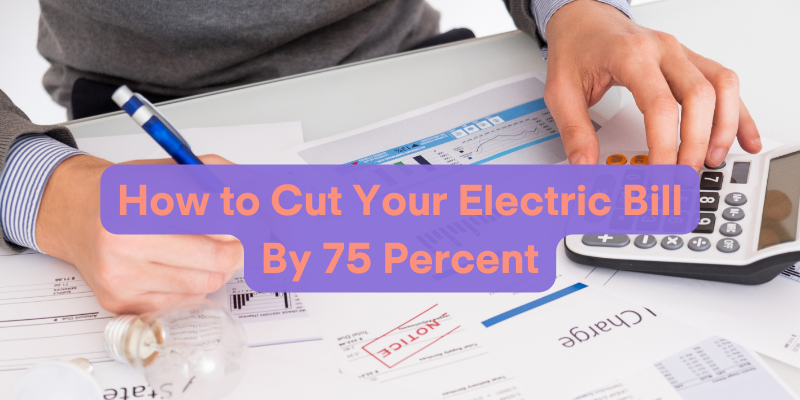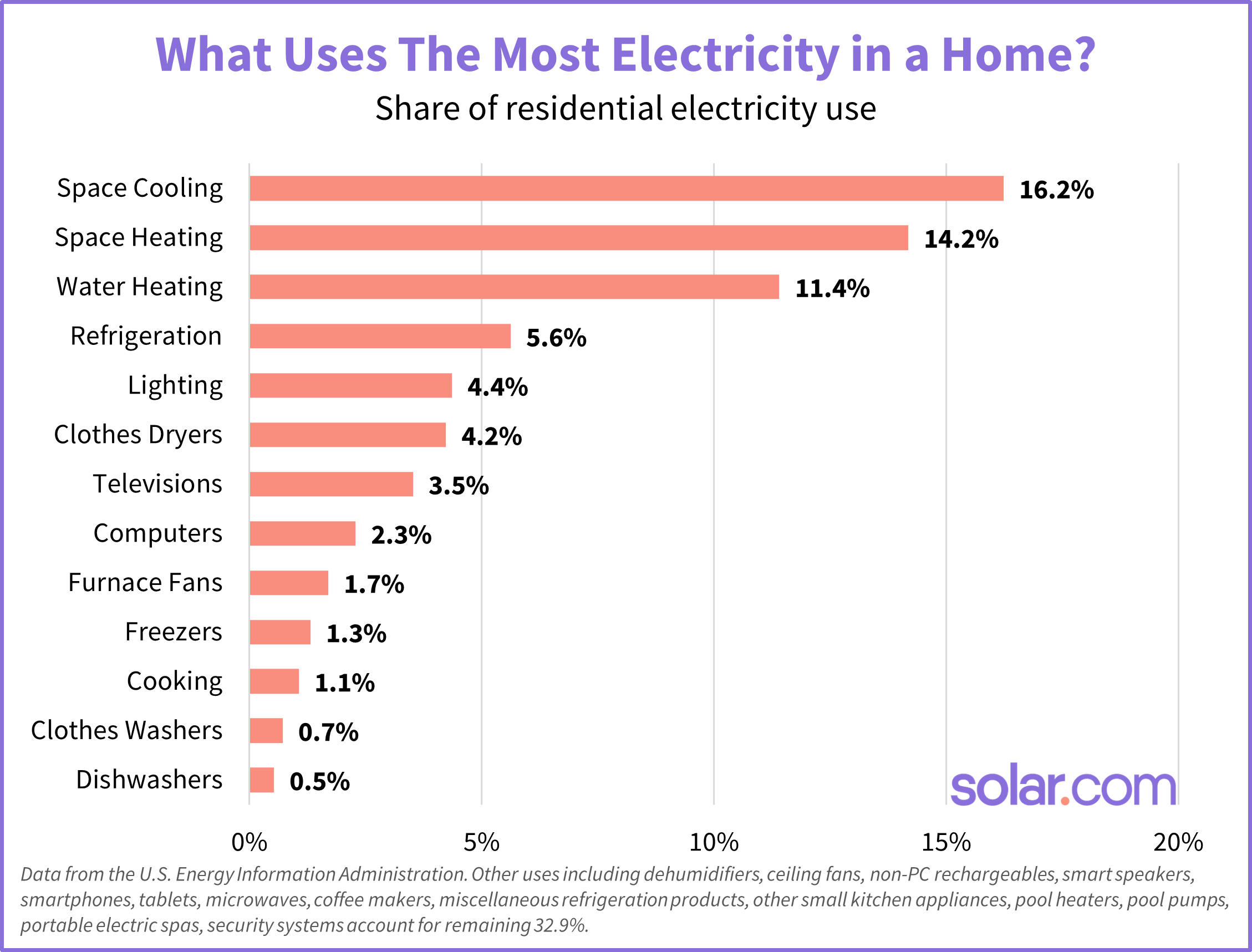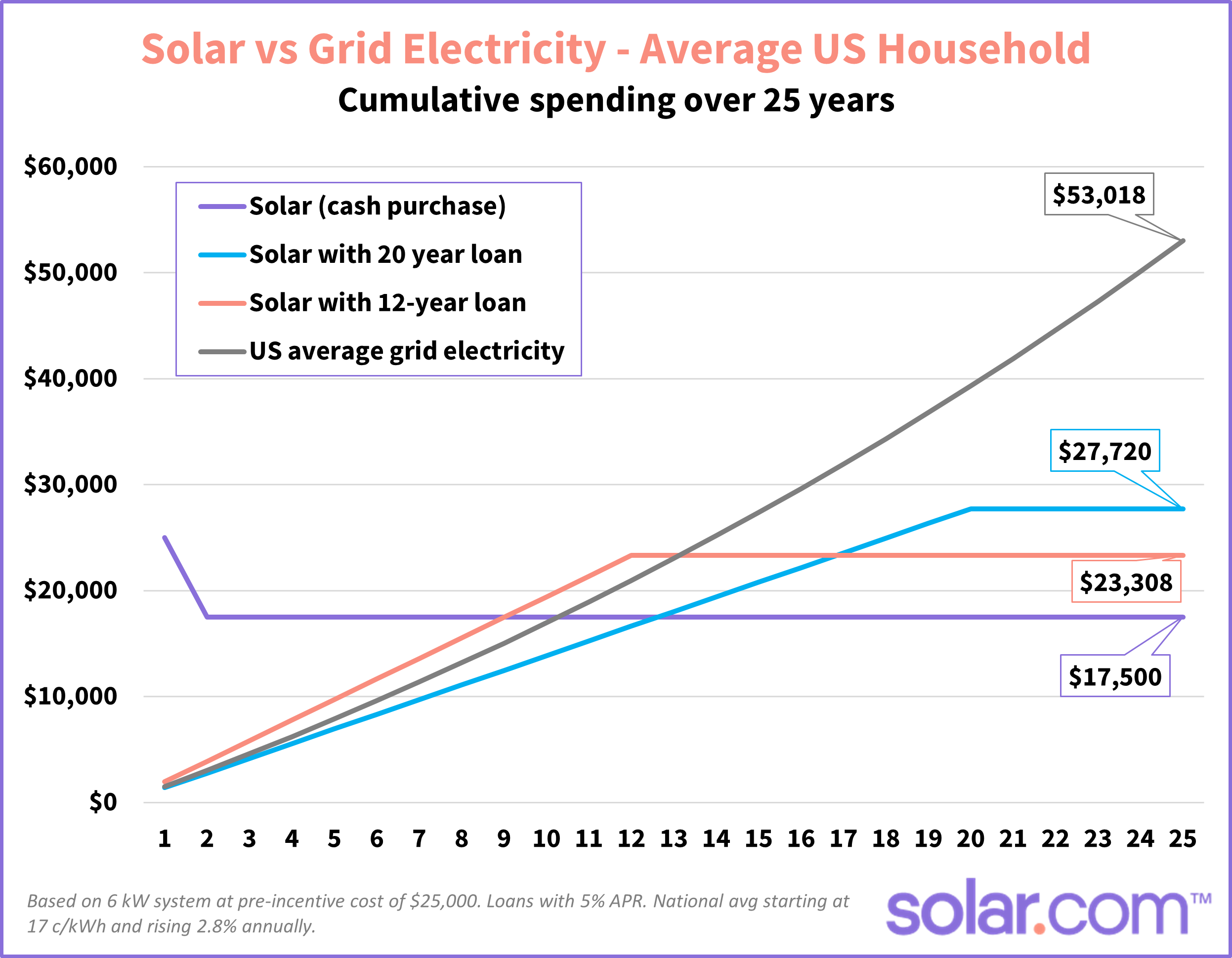
There are plenty of articles that claim you can cobble together “6 energy savings tips” or “use one magic device” to cut your electric bill by 75 percent. Well, we have good news and bad news.
The good news is that it’s totally possible to lower your electricity bill by 75% or more. The bad news is that it’s not as easy as changing a few light bulbs and unplugging appliances (as other articles suggest).
Making deep cuts to your electricity bill requires a combination of reducing your consumption and the price you pay for electricity. So, in this article, we’ll explore:
- Why cutting consumption alone won’t lower your bill by 75%
- How to actually cut your electric bill by 75%
Let’s start with a quick look at why cutting 75% of your electricity consumption simply isn’t realistic or effective.
Why focusing only on consumption won’t cut your your electric bill by 75%
There are no fewer than eight articles on Google (not including this one) that offer a path to reducing your electricity bill by 75%, all of which are basically lists of ways to reduce your electricity consumption. Not a single one provides math showing how to get to 75% reduction or even considers reducing the price you pay for electricity.
They also gloss over the fact that cutting 75% of your electricity consumption is unrealistic, inefficient, and downright miserable.
The chart below shows the electricity usage breakdown for the average household in the US. Even if you eliminated the top 13 items on the list – from air conditioning to refrigeration to running the dishwasher – you’d still only achieve 67% reduction.

So, cutting your bill by 75% by reducing consumption alone isn’t realistic, unless your plan is to have a hot, dark house, dirty clothes, cold showers, unrefrigerated food and no screens whatsoever.
But that doesn’t mean you can’t make meaningful cuts to your consumption that can help you get to 75% bill reduction, as we’ll see below.
Related reading: How To Lower Your Electric Bill With Solar Panels
How to cut your electricity bill by 75 percent
Cutting your electricity bill by 75% requires a combination of cutting consumption, sealing your home envelope, and reducing the cost per kilowatt-hour of your essential electricity needs.
Reducing the price you pay per kWh of electricity is far more effective for lowering your costs than cutting your consumption 1 kWh at a time by unplugging appliances and other such strategies. Many homeowners overlook reducing their electricity prices because, frankly, it wasn’t an option until very recently. However, with utility rates rising and robust incentives, home solar is an effective way to reduce the price you pay for electricity and, by extension, your electric bill.
For example, the average price of grid electricity reached 17 cents per kWh in June 2023, according to the US Bureau of Labor Statistics. Meanwhile, homeowners that purchase solar with cash and claim the 30% federal solar tax credit can typically produce their own electricity at around 8 cents per kWh.
That’s a 53% decrease in the price you pay for electricity.
And if you live in a state with electricity prices closer to 25 cents/kWh – like California, Massachusetts, Connecticut, or New York – going solar could easily reduce your price per kWh by 65% or more.
Slashing your rate adds up to major energy cost savings over time.
The chart below shows the cumulative cost for four different methods of buying 750 kWh of electricity per month. Accumulating solar savings can take time, but in the long run the average homeowner can reduce their electricity costs by:
- 67% if they pay cash and collect the 30% tax credit
- 47-56% if they take out a loan and collect the 30% tax credit

With solar providing 50-65% of the electricity bill reduction, you only need a few effective and realistic conservation strategies to get to 75%.
Here’s a pretty simple path to cut your electricity usage by 20% and achieve 75% bill savings overall.
How to cut your electricity usage by 20%
The greatest opportunity to conserve electricity is by setting your thermostat 7-10 degrees higher or lower for 8 hours a day. So, if you typically have your house at 72 degrees, set the thermostat to 79-82 degrees in the summer when (and if) everyone is out of the house. In the winter, set it down to 62-65 degrees.
If you do this consistently, you can save up to 10% on your electricity bill, according to the US Department of Energy (DOE).
The next biggest opportunity is to unplug appliances when they’re not in use. According to the DOE, standby power (aka “vampire power”) accounts for 5-10% of household electricity usage – which is a substantial chunk.
You can lower this drain on your consumption by unplugging appliances, using smart plugs and/or power strips, and upgrading to energy efficient appliances. Some key appliances to focus on are:
- Bathroom: Hair dryers, curling irons, electric shavers
- Kitchen: Microwaves, toaster ovens, coffee makers
- Living room: Older entertainment devices (cable boxes, DVRs, DVD players)
- Office: Laptops, PCs, gaming consoles
- Bedroom: Phone chargers, lamps, fans
Let’s say this reduces your consumption by another 5% – you’ve only got 5% left to go!
From here, you have plenty of options:
- Lower the setting on your water heater from 140 to 120 degrees
- Increase the temperature on in your fridge up to 38 degrees (but never higher than 40!)
- Seal windows and doors to reduce heating and cooling costs even further
- Hang dry clothes to prevent running the clothes dryer
- Upgrade to LED bulbs and energy efficient appliances
I know, I know… I’m starting to sound like those other articles. But now we’re only talking about a 5% reduction instead of a 75% reduction.
Solar is key to cutting your electricity bill
We are all for conserving electricity to reduce your energy costs and carbon footprint. However, it’s unrealistic to think you can cut your electric bill by 75% only by reducing your consumption.
Slashing your bill that far requires the two-pronged approach of lowering your usage and the price you pay per kWh of electricity – which you can do by installing solar panels. Home solar is the most effective way to reduce your electricity bill and gives homeowners unprecedented control over the price they pay for electricity.
Connect with an Energy Advisor to see how far you can slash your rate!


